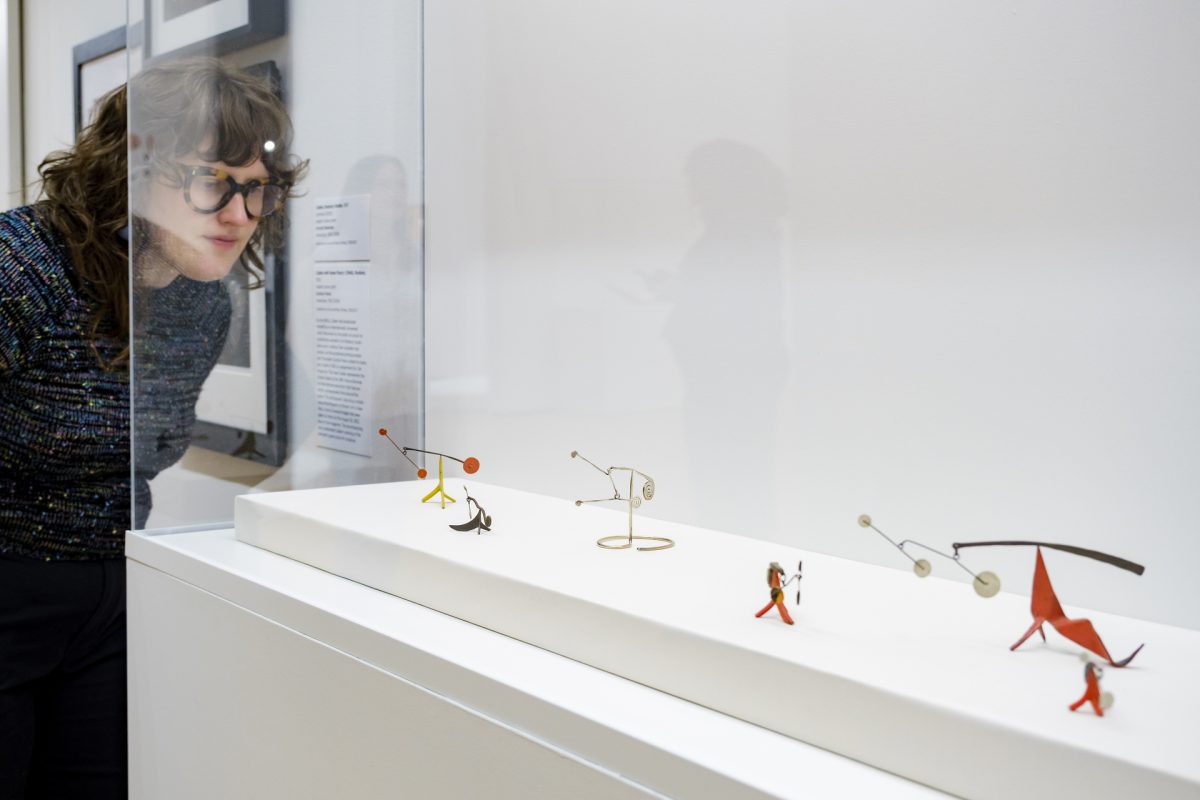Calder Smartphone Tour: Case of Small Mobiles

It is often assumed that Alexander Calder began experimenting with scale by making small, intimate sculptures before eventually scaling up to monumental commissions, such as The Eagle (1970), on view at the Olympic Sculpture Park. This assumption, however, is incorrect.
Calder’s understanding of scale began in his childhood when he observed his father managing sculpture projects (including the enlargement of monuments from models) for the 1915 Panama-Pacific International Exposition in San Francisco. Throughout his career, Calder worked in all sizes and scales, with a non-linear progression that was daring and fluid. Some of his small-scale works were made as maquettes for colossal objects. Others, including this collection of standing mobiles, were of a different breed, with many being constructed as gifts for family and friends.
In the sixth stop on the free smartphone tour of Calder: In Motion, The Shirley Family Collection, SAM Susan Brotman Deputy Director for Art José Carlos Diaz compares the artistry between Calder’s monumental and miniature sculptures. Tune in to this recording and many more via our SoundCloud or by scanning the QR codes next to select works in the exhibition’s galleries.
Haven’t visited Calder: In Motion yet? Check out visitsam.org/tickets to plan your next visit to SAM and get an up-close look at the intricate details of Alexander Calder’s tiniest sculptures.
Case of Small Mobiles: Untitled (1952), Black, White, Yellow and Brass on Red (1959), Untitled (1947), Two White Dots (1973)
NARRATOR: We often associate Calder with monumental sculpture. But he also worked on a small, delicate scale throughout his career. This case displays a grouping of some of Calder’s small-scale works. Calder was known for making works like these as gifts. José Diaz:
JOSÉ CARLOS DIAZ: There’s a famous story of Calder making small works encased in a cigar box for his wife, and so his wife, Louisa, can travel with these. She can display them as she saw fit. She can curate them within her own setting. But it’s also the small works’ complexity.
So, if you look at this case, you’ll notice that the small mobiles are just as detailed. You’ll notice that they’re balanced. You’ll notice that the use of metal is done with such delicacy that it has just as much attention as Calder would focus on for his larger-scaled works. You also can get a sense of the colors. The palettes are very similar to Calder’s larger scaled works. You’ll notice shapes that are similar to other large-scale works. But it’s often because Calder is working within an aesthetic that can really work within scale. And Calder was very conscious when he played with scale because it allowed him to also explore the way that these stabiles and mobiles could function in a setting, regardless of how big they are.
– Lily Hansen, SAM Marketing Content Creator
Photo: Installation view of Calder: In Motion, The Shirley Family Collection, Seattle Art Museum, 2023, © 2024 Calder Foundation, New York / Artists Rights Society (ARS), New York, photo: Alborz Kamalizad.